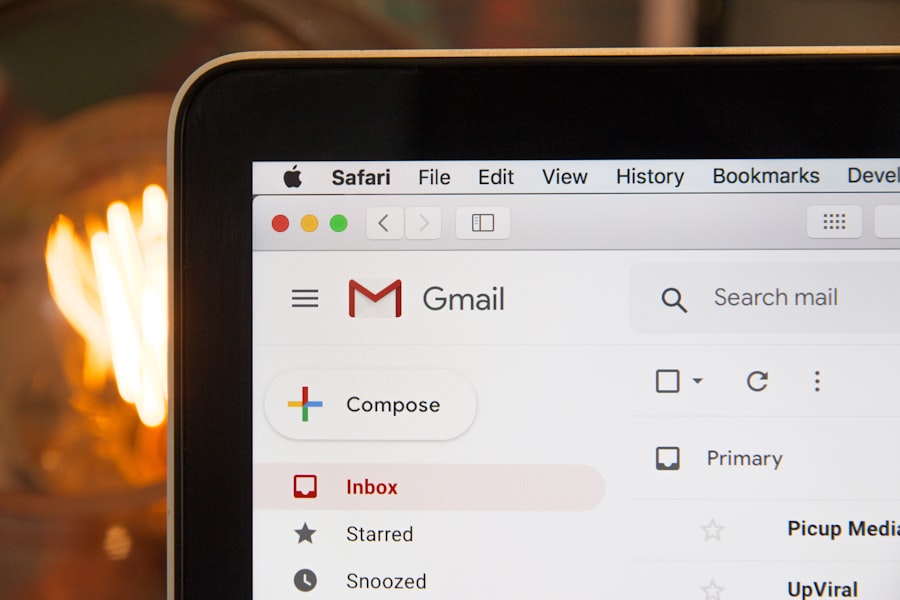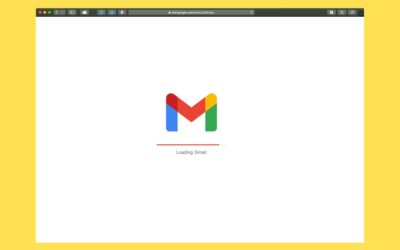SMS-iT CRM AI-Driven Email Marketing is a powerful tool that combines the benefits of customer relationship management (CRM) and artificial intelligence (AI) to create highly personalized email campaigns. This innovative technology allows businesses to send targeted and relevant messages to their customers, resulting in increased engagement, improved customer loyalty, and higher conversion rates.
Personalization is a crucial aspect of email marketing. In today’s digital age, consumers are bombarded with countless emails every day. To stand out from the crowd and capture their attention, businesses need to deliver personalized content that resonates with each recipient. By tailoring emails to individual preferences and behaviors, businesses can create a more meaningful connection with their audience and drive better results.
Key Takeaways
- SMS-iT CRM offers AI-driven email marketing for personalized campaigns
- Personalizing email campaigns leads to higher engagement and conversion rates
- Understanding your audience is key to effective personalization
- AI can enhance personalization by analyzing data and behavior patterns
- Designing visually appealing templates and crafting compelling subject lines are crucial for maximum impact
Benefits of Personalizing Email Campaigns for Each Recipient
1. Increased engagement and open rates: When emails are personalized, recipients are more likely to open and engage with them. By addressing recipients by their name and delivering content that is relevant to their interests, businesses can capture their attention and encourage them to take action.
2. Improved customer loyalty and retention: Personalized emails make customers feel valued and understood. When businesses take the time to understand their customers’ preferences and deliver tailored content, it fosters a sense of loyalty and strengthens the relationship between the business and the customer. This, in turn, leads to higher customer retention rates.
3. Higher conversion rates and revenue: Personalized emails have been proven to drive higher conversion rates. When recipients receive emails that are tailored to their needs and interests, they are more likely to make a purchase or take the desired action. This ultimately leads to increased revenue for the business.
Understanding Your Audience for Effective Personalization
1. Importance of collecting and analyzing customer data: To personalize email campaigns effectively, businesses need to collect and analyze customer data. This includes information such as demographics, purchase history, browsing behavior, and preferences. By understanding their audience on a deeper level, businesses can create more targeted and relevant email campaigns.
2. Identifying customer preferences and behaviors: By analyzing customer data, businesses can identify patterns and trends in customer preferences and behaviors. This information can be used to segment the audience and deliver personalized content that aligns with their interests. For example, if a customer has shown a preference for a certain product category, businesses can send them emails featuring similar products or promotions.
3. Creating buyer personas for targeted messaging: Buyer personas are fictional representations of your ideal customers. They are created based on data and insights gathered from your existing customer base. By creating buyer personas, businesses can better understand their target audience and tailor their messaging to resonate with each persona. This allows for more effective personalization in email campaigns.
Leveraging AI to Enhance Email Personalization
1. How AI can automate personalization at scale: AI technology can analyze large amounts of customer data and automate the personalization process at scale. By using machine learning algorithms, AI can identify patterns and trends in customer behavior and preferences, allowing businesses to deliver highly personalized emails to each recipient without manual intervention.
2. Examples of AI-driven personalization in email marketing: AI can be used to personalize various elements of an email campaign, including subject lines, content recommendations, product recommendations, and send times. For example, AI algorithms can analyze past email engagement data to determine the optimal send time for each recipient, increasing the chances of the email being opened and read.
3. Benefits of using AI for email personalization: AI-driven personalization offers several benefits for businesses. It saves time and resources by automating the personalization process, allowing businesses to focus on other important tasks. It also improves the accuracy of personalization by analyzing large amounts of data and identifying patterns that humans may miss. Additionally, AI-driven personalization can lead to better results, such as increased open rates, engagement, and conversions.
Designing Personalized Email Templates for Maximum Impact
1. Best practices for designing personalized email templates: When designing personalized email templates, it’s important to keep the following best practices in mind:
– Use a clean and professional design that aligns with your brand.
– Incorporate personalization elements, such as the recipient’s name or past purchase history.
– Use clear and concise language to convey your message.
– Include a clear call to action that prompts recipients to take the desired action.
– Optimize the email for different devices, ensuring it looks good on both desktop and mobile.
2. Examples of effective personalized email templates: Personalized email templates can take many forms, depending on the business and its goals. Some examples include:
– Abandoned cart emails that remind customers of items they left behind and offer incentives to complete the purchase.
– Birthday emails that offer special discounts or rewards to celebrate the customer’s special day.
– Product recommendation emails that suggest similar products based on the customer’s past purchases or browsing history.
3. Tips for optimizing email design for different devices: With the increasing use of mobile devices, it’s crucial to optimize email design for different screen sizes. Some tips for optimizing email design for different devices include:
– Use a responsive design that adapts to different screen sizes.
– Keep the email layout simple and easy to read on smaller screens.
– Use large fonts and buttons that are easy to tap on touchscreens.
– Test the email on different devices and email clients to ensure it displays correctly.
Crafting Compelling Subject Lines for Personalized Emails

1. Importance of subject lines in email marketing: The subject line is one of the first things recipients see when they receive an email. It plays a crucial role in determining whether or not they will open the email. A compelling subject line can grab the recipient’s attention and entice them to open the email, while a generic or uninteresting subject line may cause the email to be ignored or deleted.
2. Tips for crafting personalized subject lines: When crafting personalized subject lines, consider the following tips:
– Use the recipient’s name to create a sense of personalization.
– Incorporate urgency or scarcity to create a sense of FOMO (fear of missing out).
– Tailor the subject line to the recipient’s interests or preferences.
– Keep the subject line concise and to the point.
– Test different subject lines to see which ones perform best.
3. Examples of effective personalized subject lines: Some examples of effective personalized subject lines include:
– “John, don’t miss out on this exclusive offer!”
– “We have a special birthday surprise for you, Sarah!”
– “Based on your past purchases, we think you’ll love these new arrivals.”
Segmentation Strategies for Personalized Email Campaigns
1. Importance of segmentation in email marketing: Segmentation is the process of dividing your audience into smaller, more targeted groups based on specific criteria. By segmenting your audience, you can deliver more relevant and personalized content to each group, increasing the chances of engagement and conversion.
2. Types of segmentation for personalized email campaigns: There are various ways to segment your audience for personalized email campaigns. Some common segmentation criteria include:
– Demographics (age, gender, location)
– Purchase history
– Browsing behavior
– Engagement level (e.g., frequent buyers vs. inactive customers)
– Interests or preferences
3. Examples of effective segmentation strategies: Some examples of effective segmentation strategies include:
– Segmenting customers based on their purchase history to send targeted product recommendations or upsell/cross-sell offers.
– Segmenting customers based on their engagement level to re-engage inactive customers with special promotions or incentives.
– Segmenting customers based on their browsing behavior to send personalized content related to the products or categories they have shown interest in.
A/B Testing for Personalized Email Campaign Optimization
1. Importance of A/B testing in email marketing: A/B testing involves sending two versions of an email to different segments of your audience and comparing the results to determine which version performs better. A/B testing is important because it allows businesses to optimize their email campaigns and make data-driven decisions based on actual performance metrics.
2. Examples of A/B testing for personalized email campaigns: Some examples of A/B testing for personalized email campaigns include:
– Testing different subject lines to see which ones generate higher open rates.
– Testing different call-to-action buttons or copy to see which ones drive higher click-through rates.
– Testing different personalization elements (e.g., using the recipient’s name vs. not using the recipient’s name) to see which ones lead to better engagement.
3. Tips for optimizing personalized email campaigns through A/B testing: When conducting A/B tests for personalized email campaigns, consider the following tips:
– Test one variable at a time to isolate the impact of each change.
– Use a large enough sample size to ensure statistical significance.
– Track and analyze the results carefully to draw meaningful conclusions.
– Iterate and refine your email campaigns based on the insights gained from A/B testing.
Analyzing Personalized Email Campaign Performance Metrics
1. Importance of tracking email campaign performance metrics: Tracking email campaign performance metrics is crucial for evaluating the success of your personalized email campaigns. By analyzing these metrics, businesses can gain insights into what is working and what needs improvement, allowing them to refine their strategies and achieve better results.
2. Key metrics to track for personalized email campaigns: Some key metrics to track for personalized email campaigns include:
– Open rate: The percentage of recipients who open the email.
– Click-through rate: The percentage of recipients who click on a link or call-to-action button in the email.
– Conversion rate: The percentage of recipients who complete the desired action, such as making a purchase or filling out a form.
– Revenue generated: The total revenue generated from the email campaign.
3. Tips for analyzing and interpreting email campaign data: When analyzing and interpreting email campaign data, consider the following tips:
– Look for trends and patterns over time to identify areas of improvement.
– Compare the performance of different segments or versions of the email to determine what is working best.
– Use data visualization tools to present the data in a clear and concise manner.
– Continuously monitor and track performance metrics to identify any changes or trends that may require action.
Best Practices for Successful Personalized Email Campaigns
1. Recap of key takeaways for successful personalized email campaigns: To summarize, here are some key takeaways for successful personalized email campaigns:
– Collect and analyze customer data to understand your audience on a deeper level.
– Use AI-driven technology to automate personalization at scale.
– Design personalized email templates that are visually appealing and optimized for different devices.
– Craft compelling subject lines that grab the recipient’s attention.
– Segment your audience based on specific criteria to deliver more relevant content.
– Conduct A/B testing to optimize your email campaigns based on actual performance metrics.
– Track and analyze email campaign performance metrics to evaluate success and make data-driven decisions.
2. Tips for implementing personalized email campaigns: When implementing personalized email campaigns, consider the following tips:
– Start small and gradually scale up as you gather more data and insights.
– Test different personalization strategies to see what works best for your audience.
– Continuously monitor and analyze the performance of your email campaigns to identify areas for improvement.
– Regularly update and refine your buyer personas to ensure they accurately reflect your target audience.
– Stay up to date with industry trends and best practices to stay ahead of the competition.
3. Examples of successful personalized email campaigns: Some examples of successful personalized email campaigns include:
– Amazon’s personalized product recommendations based on past purchases and browsing history.
– Spotify’s personalized playlists and recommendations based on listening history and preferences.
– Airbnb’s personalized travel recommendations based on past bookings and saved listings.
Personalization is a key driver of success in email marketing. By delivering targeted and relevant content to each recipient, businesses can increase engagement, improve customer loyalty, and drive higher conversion rates. With the help of SMS-iT CRM AI-Driven Email Marketing, businesses can leverage AI technology to automate personalization at scale, resulting in more effective and efficient email campaigns. By following best practices, implementing segmentation strategies, conducting A/B testing, and analyzing performance metrics, businesses can optimize their personalized email campaigns and achieve better results. So why wait? Take action now and implement personalized email campaigns with SMS-iT CRM AI-Driven Email Marketing to take your email marketing efforts to the next level.
If you’re interested in learning more about how SMS-iT CRM utilizes smart analytics to enhance your marketing efforts, you should definitely check out this article on SMS-iT’s blog. It provides valuable insights into how the AI-driven email marketing platform can personalize campaigns for each recipient, resulting in higher engagement and conversion rates. To further optimize your marketing strategy, you might also want to explore their article on SMS-iT’s text-to-join feature, which allows you to effortlessly grow your subscriber list. Additionally, their article on SMS-iT’s customer relationship management capabilities delves into how the platform can help you build and maintain strong relationships with your customers. Don’t miss out on these informative resources!
FAQs
What is SMS-iT CRM AI-driven email marketing?
SMS-iT CRM AI-driven email marketing is a marketing strategy that uses artificial intelligence to personalize email campaigns for each recipient. It involves analyzing customer data to create targeted and relevant content that resonates with the recipient.
How does SMS-iT CRM AI-driven email marketing work?
SMS-iT CRM AI-driven email marketing works by using machine learning algorithms to analyze customer data such as purchase history, browsing behavior, and demographics. This data is then used to create personalized email campaigns that are tailored to the recipient’s interests and preferences.
What are the benefits of SMS-iT CRM AI-driven email marketing?
The benefits of SMS-iT CRM AI-driven email marketing include increased engagement, higher open and click-through rates, improved customer loyalty, and increased revenue. By personalizing email campaigns, businesses can create a more meaningful connection with their customers and improve the overall customer experience.
What types of businesses can benefit from SMS-iT CRM AI-driven email marketing?
Any business that uses email marketing can benefit from SMS-iT CRM AI-driven email marketing. However, businesses that have a large customer base or sell products/services that require a high level of personalization are likely to see the most significant benefits.
What are some examples of personalized email campaigns?
Examples of personalized email campaigns include product recommendations based on purchase history, personalized subject lines that include the recipient’s name, and targeted promotions based on the recipient’s location or interests. These campaigns are designed to create a more personalized experience for the recipient and increase the likelihood of engagement.







